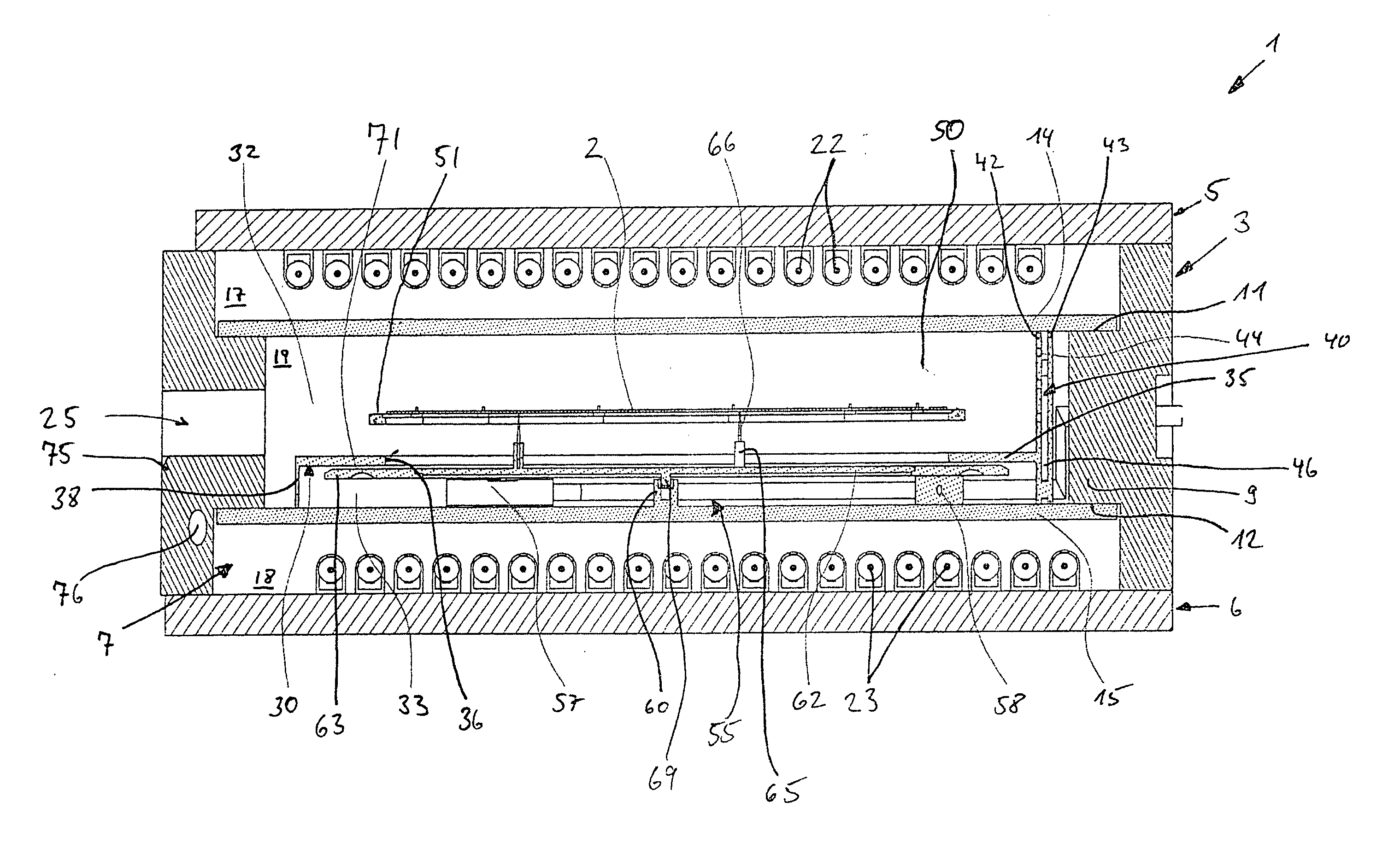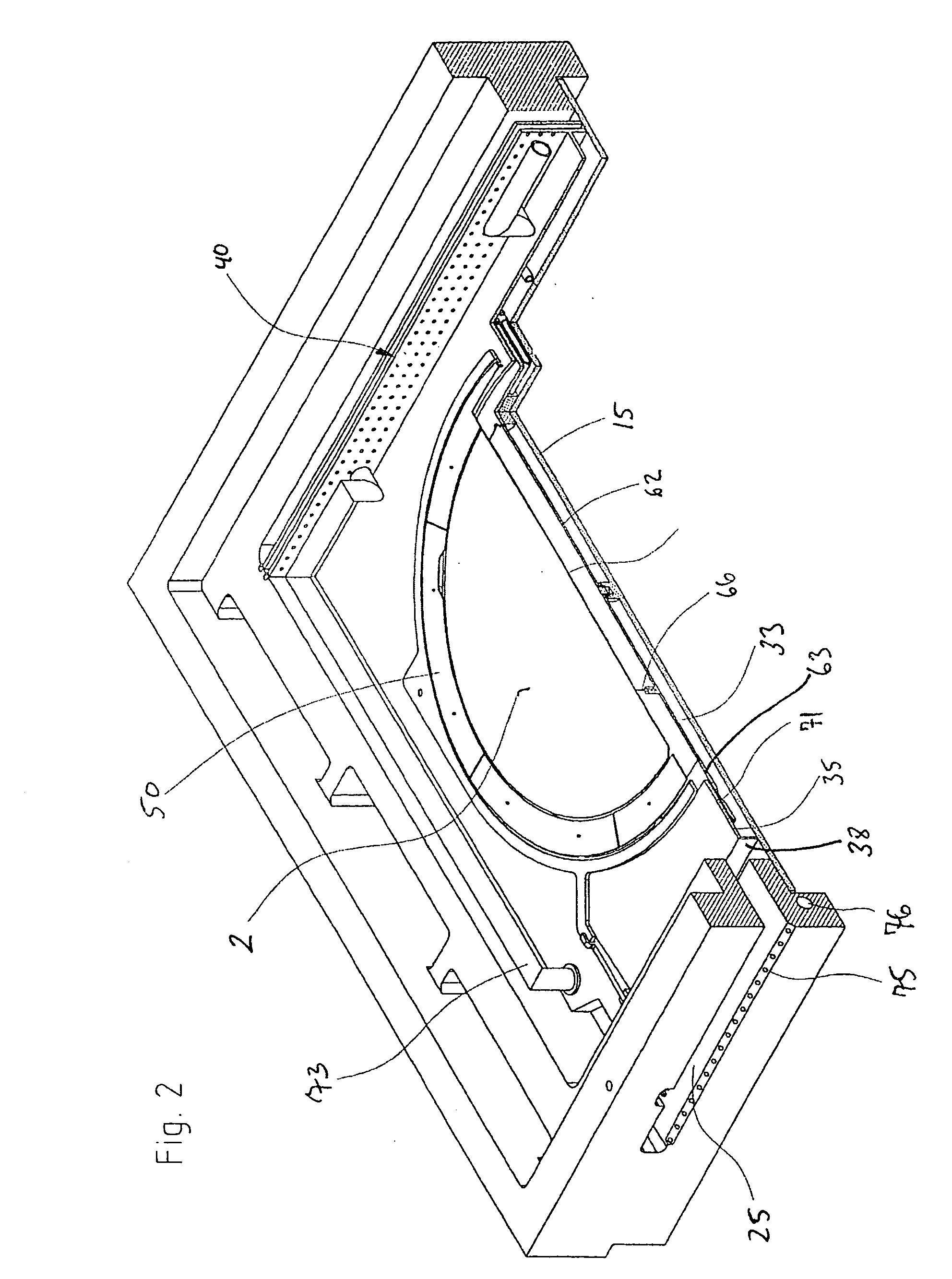Device and method for the reduction of particles in the thermal treatment of rotating substrates
a technology of rotating substrates and devices, applied in the field of semiconductor wafers, can solve the problems of special constraints on the flow of gas, rotation produces mechanical abrasion, and therefore particles, and the occurrence of particles caused by mechanical abrasion cannot be avoided altogether, so as to achieve simple and cost-effective effects
- Summary
- Abstract
- Description
- Claims
- Application Information
AI Technical Summary
Benefits of technology
Problems solved by technology
Method used
Image
Examples
Embodiment Construction
[0037]FIG. 1 schematically shows, in a cross-section, a preferred example of an embodiment of a rapid heating system 1, whereas FIG. 2 shows a partially sectioned perspective illustration of the rapid heating system 1. The rapid heating system 1 is provided for the thermal treatment of a disc-shaped substrate such as a semiconductor wafer.
[0038] In all of the figures, the same or similar components are identified with the same reference numbers. The relative terms used in the following description such as for example upper, lower etc. relate purely as examples to the representation in the figures and should not restrict the invention in any way.
[0039] The rapid heating system 1 has a frame-like main body 3, the upper and lower ends of which are covered by plate elements 5, 6 so as to form a rapid heating chamber 7.
[0040] The frame-like main body has an inwardly extending projection 9 which forms upper and lower circumferential contact surfaces 11 and 12. Upper and lower plate ele...
PUM
| Property | Measurement | Unit |
|---|---|---|
| Fraction | aaaaa | aaaaa |
| Pressure | aaaaa | aaaaa |
| Length | aaaaa | aaaaa |
Abstract
Description
Claims
Application Information
 Login to View More
Login to View More - R&D
- Intellectual Property
- Life Sciences
- Materials
- Tech Scout
- Unparalleled Data Quality
- Higher Quality Content
- 60% Fewer Hallucinations
Browse by: Latest US Patents, China's latest patents, Technical Efficacy Thesaurus, Application Domain, Technology Topic, Popular Technical Reports.
© 2025 PatSnap. All rights reserved.Legal|Privacy policy|Modern Slavery Act Transparency Statement|Sitemap|About US| Contact US: help@patsnap.com



